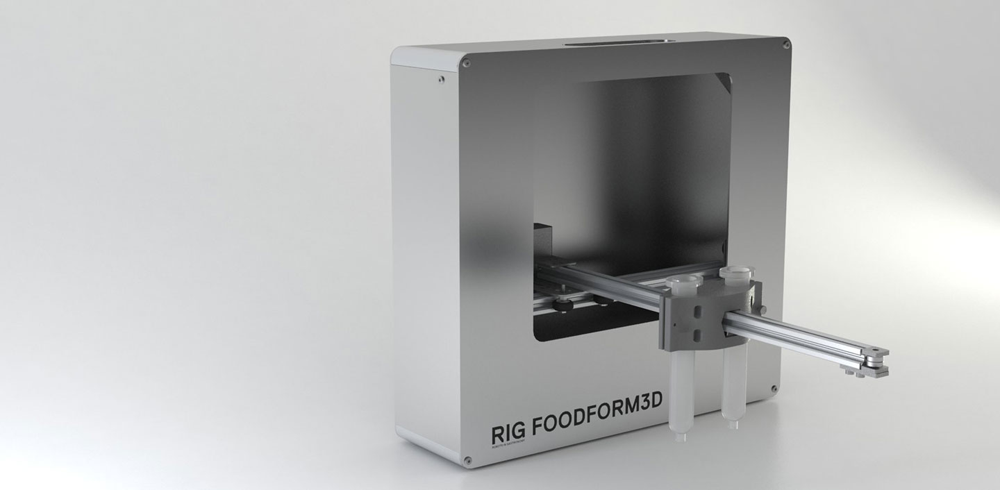If you’re interested in food 3D printing, 3Digital Cooks (3DC) is a great resource. Run by digital cook Luis Rodriguez Alcalde, the site is always up-to-date on the latest in food printing technology. Perusing 3DC, I came across Robots in Gastronomy (RIG), a Spanish company that 3DC has been aware of for some time. RIG has been working to develop their own food printer for at least two years and has come up with some innovative techniques in the process.
RIG was formed by Paco Morales, José Ramón-Tramoyeres, Andres Arias Madrid, Deniz Manisali, Luis E. Fraguada, in collaboration with Institute for Advanced Architecture of Catalonia, Fab Lab Barcelona, SMD Architects. Beginning with early MakerBot 3D printers, the crew modded the devices to extrude chocolate, jelly, and other viscous food materials. The group has since moved on from their MakerBot prototypes to their own printer, called the Food Form.
Like many other food printers developed since the original Fab@Home food printing experiments, the Food Form uses a syringe to extrude food materials. The group can 3D print onto heated beds or, even, cold ones. The most recent experiment that RIG has performed is the 3D printing of ice cream, with the help of a PolyScience Anti-Griddle, a flash freezing device that can reach temperatures as low as -30°F / -34.4°C. RIG was able to temporarily make use of an Anti-Griddle owned by Cocktail Lab to print several layers of ice cream cold enough to remove from the build plate by hand.
Luis Frugada, who heads up RIG, tells Dezeen about his motivation for printing food, “For me, it’s interesting to think about the possibilities for somebody with specific dietary requirements – someone who needs to precisely measure out certain types of food, for example. Nutrition is the root of many of our medical problems, globally. My hope is that at some point we will have more control over the elements that we put into our bodies.”
As RIG has been working on their food printing techniques for the past two years, I wouldn’t be surprised if they didn’t make some big contributions to the food printing community. And, after seeing this cool treat, you can bet that you’ll see some more stories from 3DC crop up here.




